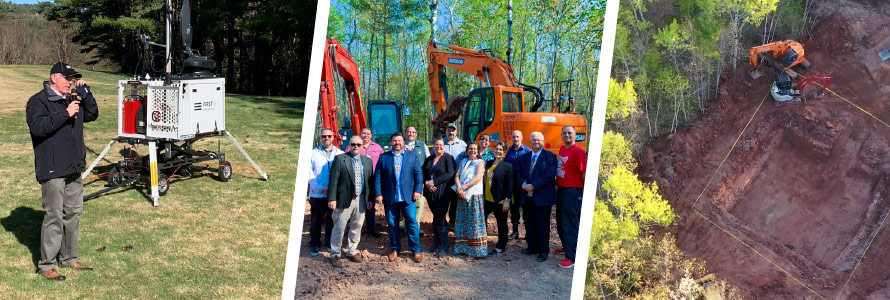This blog is a repost from TribalNet magazine, originally published in the Fall 2021 edition.
Twenty years ago, the 9/11 terrorist attacks on our nation revealed fundamental problems with our emergency communications systems. Police officers, firefighters, and paramedics could not communicate across radio systems, and cell towers were congested with commercial usage. First responders’ inability to communicate on that fateful day underscored significant public safety communication shortfalls nationwide – including on tribal lands.
Following years of public safety advocacy, Congress passed legislation in 2012, establishing a nationwide public safety broadband network known as FirstNet. In past agency updates, we have highlighted the critical voice tribal leaders provided throughout the planning, design, and buildout of the network. Today, because of their input, tribal nations are experiencing improved coverage through new cellular infrastructure on tribal lands and the expansion of deployable network assets.
FirstNet coverage brings critical connectivity to tribal lands
The First Responder Network Authority (FirstNet Authority) and its network contractor AT&T are working to bring FirstNet’s unique capabilities to areas historically prone to communication challenges. Today, the FirstNet network provides over 2.71 million square miles of coverage, and new cell sites are launching nationwide, including in tribal communities such as the Nez Perce Reservation in Idaho, the Spirit Lake Reservation in North Dakota, and the Yankton Sioux Reservation in South Dakota.
For the first responders serving the Yankton Sioux communities, having a new FirstNet cell site directly on the reservation is bringing much-needed coverage and capabilities to the area. “The site will not only support enhanced signal strength for data transfer in our police cars, but also public safety will be able to travel across the reservation and connect to voice and data on FirstNet devices, ultimately improving officer safety and benefiting communities across our tribal lands,” explained Yankton Sioux Tribal Police Chief Chris Saunsoci.
FirstNet deployables boost coverage for tribal responders
Tribal first responders subscribed to FirstNet also have access to the network’s fleet of deployable assets. These portable cell sites are available free of charge to FirstNet users in need of on-demand coverage.
Last year, the FirstNet Authority approved investment funding to expand the FirstNet deployable fleet to meet the growing demand for deployables. FirstNet subscribers now have access to more than 100 portable assets, including SatCOLTS (satellite cell on light trucks), flying cells on wings, an aerostat, communication vehicles, and compact rapid deployables. First responders in Indian Country can rely on FirstNet’s enhanced coverage solutions to provide life-saving response across tribal lands and rural communities.
Working together to enhance tribal broadband
Public safety communications have drastically changed in the twenty years since 9/11, but there is still work to be done. As we look to the future, the FirstNet Authority will continue to actively engage with tribal leaders and public safety officials to ensure their needs are reflected in the network.
Learn more about the FirstNet Authority’s tribal activities at firstnet.gov/tribal. For more information about participating in a FirstNet Authority engagement or to request a tribal consultation, email the Tribal Team directly at tribalconsultation@firstnet.gov.




















